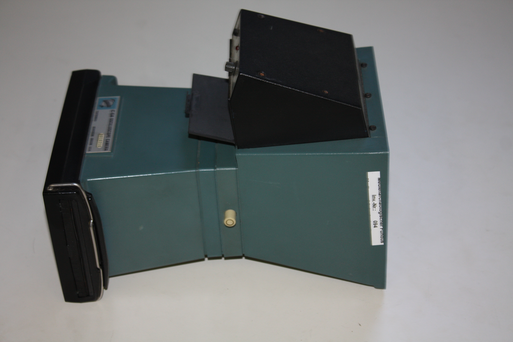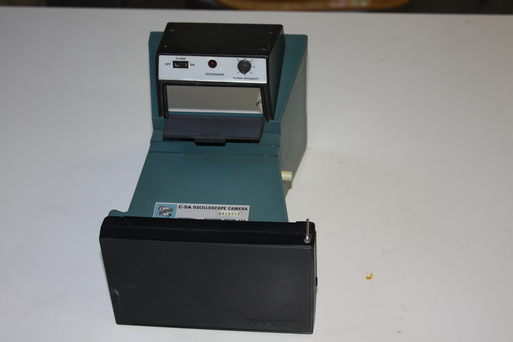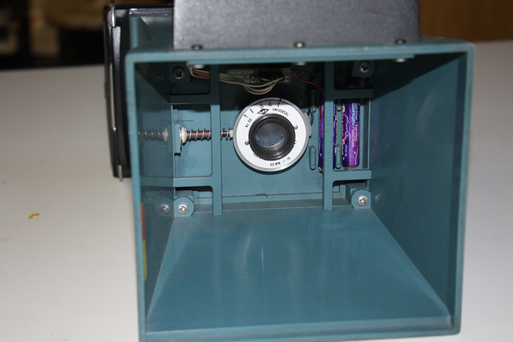Oszilloskop Kamera: Unterschied zwischen den Versionen
Aus Medienarchäologischer Fundus
Die Seite wurde neu angelegt: „ * '''Grunddaten''' {| class="wikitable" |- | Inventarnummer: || 0094 |- | Land: || USA |- | Hersteller: || Tektronix |- | Baujahr: || 1970er |- | Modell: || …“ |
K Kategorie angelegt |
||
| Zeile 1: | Zeile 1: | ||
== Grunddaten == | |||
{| class="wikitable" | {| class="wikitable" | ||
| Zeile 15: | Zeile 14: | ||
|} | |} | ||
== Beschreibung == | |||
Although a CRO allows one to view a signal, in its basic form it has no means of recording that signal on paper for the purpose of documentation. Therefore, special oscilloscope cameras were developed to photograph the screen directly. Early cameras used roll or plate film, while in the 1970s Polaroid instant cameras became popular. A P11 CRT phosphor (visually blue) was especially effective in exposing film. Cameras (sometimes using single sweeps) were used to capture faint traces. | Although a CRO allows one to view a signal, in its basic form it has no means of recording that signal on paper for the purpose of documentation. Therefore, special oscilloscope cameras were developed to photograph the screen directly. Early cameras used roll or plate film, while in the 1970s Polaroid instant cameras became popular. A P11 CRT phosphor (visually blue) was especially effective in exposing film. Cameras (sometimes using single sweeps) were used to capture faint traces. | ||
| Zeile 22: | Zeile 20: | ||
(aus: http://en.wikipedia.org/wiki/Oscilloscope_types) | (aus: http://en.wikipedia.org/wiki/Oscilloscope_types) | ||
== Bilder == | |||
[[Datei:IMG_165-3.png|C-5A 1]] | |||
[[Datei:IMG_165-3.png | |||
[[Datei:IMG_165-4.png | [[Datei:IMG_165-4.png|C-5A 2]] | ||
[[Datei:IMG_165-5.png | [[Datei:IMG_165-5.png|C-5A 3]] | ||
[[Kategorie:Inventar]] | [[Kategorie:Inventar]] | ||
[[Kategorie:Mess]] | |||
[[Kategorie:Optische]] | |||
[[Kategorie:Aufschreibe]] | |||
Aktuelle Version vom 25. April 2013, 15:09 Uhr
Grunddaten
| Inventarnummer: | 0094 |
| Land: | USA |
| Hersteller: | Tektronix |
| Baujahr: | 1970er |
| Modell: | C-5A Oscilloscope Camera |
Beschreibung
Although a CRO allows one to view a signal, in its basic form it has no means of recording that signal on paper for the purpose of documentation. Therefore, special oscilloscope cameras were developed to photograph the screen directly. Early cameras used roll or plate film, while in the 1970s Polaroid instant cameras became popular. A P11 CRT phosphor (visually blue) was especially effective in exposing film. Cameras (sometimes using single sweeps) were used to capture faint traces.
(aus: http://en.wikipedia.org/wiki/Oscilloscope_types)





